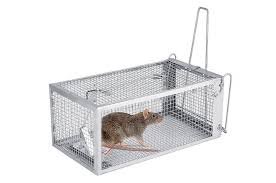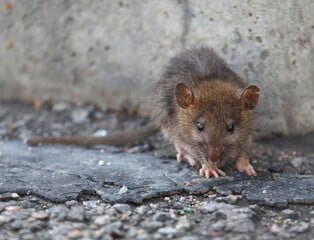Table of Contents
How to Get rid of Rats in walls
If you suspect that you have rats in your walls, it is important to take immediate action to remove them, as they can cause significant damage to your home and pose health risks. Here is a detailed guide on how to effectively get rid of mice in walls:

1. Identify the problem to get rid of Rats in walls.
Before taking any action, confirm that mice are indeed the source of the problem.
- Listen for noises: Mice are nocturnal, so you’re more likely to hear them at night. Listen for scraping, scratching, or scraping sounds coming from the walls.
- Check for droppings: Look for rodent droppings around your home, especially near walls, carpets, basements, and other secluded areas.
- Smell: A strong, musky smell can indicate the presence of Rats. If there is a large infection, the smell may be more noticeable.
2. Find entry points of Rats in home.
Mice can enter your home through very small openings. Finding and sealing these entry points is critical to prevent more rodents from entering.
- Inspect the exterior: Carefully inspect the exterior of your home for gaps, cracks, or holes. Pay special attention to areas around utility lines, vents, and where the foundation meets walls.
- Check inside: Look for holes in baseboards, around pipes, and in the attic or basement. Mice often make entry points behind appliances, in cabinets and under sinks.
3. Seal entry points.
Once you’ve identified entry points, it’s important to seal them to prevent further infection.
- Use steel wool: Rats can chew through many materials, but steel wool is difficult for them to chew. Fill the small holes with steel wool and seal them with caulking.
- Caulk and sealant: Use caulk or other sealants to seal large gaps and cracks. For larger holes, you may need to use hardware cloth or metal sheeting.
- Weatherstripping: Make sure doors and windows are properly sealed with weatherstripping to prevent rodents from squeezing into spaces.
4. Set traps to get rid of rats in walls.
Trapping is one of the most effective ways to eliminate mice in walls. There are several types of traps to consider:

- Snap Traps: Traditional snap traps are highly effective when placed correctly. Place them next to walls where mice are likely to travel. Roast them with peanut butter, dried fruits or nuts.
- Live Traps: Live traps can be used to humanely capture rats if you prefer not to kill them. Once caught, release the rats away from your home, ideally in a wooded area.
- Electronic traps: These traps deliver a lethal electric shock to mice when they enter. They are effective and provide quick, humane kills.
5. Use bait stations and roden ticides (with caution)
Rat poison (rat poison) should be used as a last resort because of the dangers it poses to pets, children, and non-target wildlife. If you choose this method, follow these instructions:
- Bait Stations: Use tamper-resistant bait stations to control poisoning and prevent accidental ingestion by non-target animals.
- Placement: Place bait stations near areas where you’ve seen rodent activity, but away from areas accessible to pets and children.
- Monitor: Check bait stations regularly and replace bait as needed. Be aware that mice can die in walls, which can cause an odor problem.
6. Use natural repellents to get rid of rats in walls.
Natural repellents can help repel rats without the use of toxic substances.
- Peppermint Oil: Rats dislike the smell of peppermint oil. Soak cotton balls in peppermint oil and place them near entry points and in areas where you’ve seen rat activity.
- Ammonia: The strong smell of ammonia mimics the scent of predator urine and can deter rodents. Place ammonia-soaked rags near entry points and affected areas.
- Ultrasonic Repellents: These devices emit high-frequency sound waves that are unpleasant to rodents but usually inaudible to humans and pets. Place them in rooms where you suspect rat activity.
7. Remove food and water sources.
Eliminating food and water sources will make your home less attractive to mice.
- Store food properly: Keep all food in sealed containers, especially in the kitchen and pantry. Do not leave pet food out overnight.
- Clean regularly: Clean up spills and crumbs immediately. Be sure to regularly clean under appliances and other hard-to-reach areas.
- Fix Leaks: Rats need water to survive, so fix any leaks in your home. Do not leave pet water bowls out overnight.
8. Monitoring and Maintenance
Once you’ve taken steps to eliminate rats, ongoing monitoring and maintenance is key to ensuring they don’t return.
- Regular inspections: Periodically inspect your home for new signs of rodent activity, such as droppings, bite marks, or new entry points.
- Keep on trapping: Keep trapping even when you think the rats have gone to catch them.
- Reapply repellent: Natural repellents may need to be reapplied regularly to maintain their effectiveness.
9. Consider professional help.
If the infestation is severe or if you are unable to get rid of the mice yourself, it may be time to call a professional pest control service.
- Assessment: A professional will assess the extent of the infestation and identify all entry points and nesting areas.
- Treatment Plan: They will develop a comprehensive treatment plan, which may include trapping, baiting, and extrication techniques.
- Follow-up: Many pest control companies offer follow-up visits to ensure the rodents are completely eradicated and help prevent future infestations.
Conclusions
Dealing with rodents in enclosures requires a combination of identification, exclusion, trapping, and ongoing prevention efforts. By sealing entry points, netting, using repellents, and removing food sources, you can effectively eliminate mice from your home. For more severe infestations, professional pest control services can provide the expertise and resources needed to eradicate the problem completely. Consistent monitoring and maintenance will help ensure that your home remains rodent-free in the future.


Thank you for your sharing. I am worried that I lack creative ideas. It is your article that makes me full of hope. Thank you. But, I have a question, can you help me?
Your article helped me a lot, is there any more related content? Thanks!